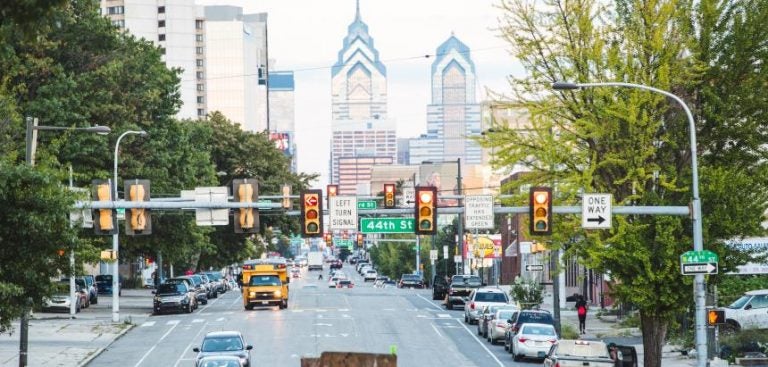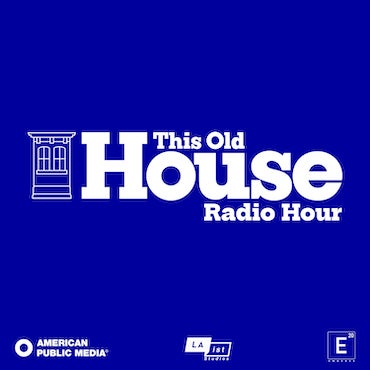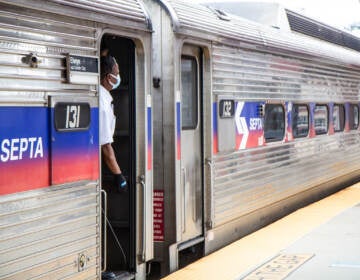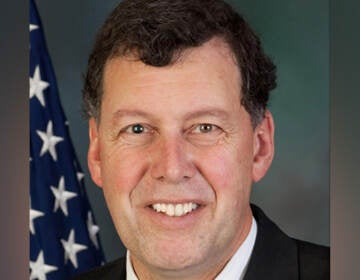Good news and the bad in Philadelphia’s transportation plan
Philadelphia deserves a serious transportation agenda.

A view of the skyline from University City (Lora Reehling/University City District)
Philadelphia deserves a serious transportation agenda.
Recently, the City of Philadelphia released its Connect Strategic Transportation Plan. A lack of transportation is a key obstacle to employment for many poor Philadelphians. According to the City’s own survey of more than 7,000 residents, street conditions were a far greater concern than public safety or schools, and nearly half of respondents rated the repair City of streets as poor. The number of people killed or seriously injured walking, in cars, and on bikes remains stubbornly persistent.
The good news is that Philly’s transportation woes are the result of growth and the price tag for a better way forward does not cost billions of dollars. The bad news is that it requires something that might be even harder to come by: a change in attitude. The City needs partners in citizens and institutions, and this change in attitude is already afoot in University City.
The crux of Philadelphia’s transportation challenge is that a set of 21stcentury transportation demands are trying to move on 18th and 19th century infrastructure, largely governed by a 20th century set of attitudes about how to make our streets work better.
Center City’s street grid looks the same as a 1797 map, University City’s street grid is unchanged from 1883, and this story repeats itself across the city. The designers of this infrastructure never could have imaged the level of demand for driving, deliveries, transit, walking and biking on our streets.
Nearly 20 years into the 21st century, Philadelphians are demanding choices in how they get around and taking more trips. Even with modest declines in ridership, SEPTA still carries more than a million travelers each weekday and more than 600,000 on weekends. 17,000 Philadelphians bike to work, up 70 percent from a decade ago. There are over 350,000 more walking trips taken in University City and Center City every day than a decade ago. Lyft and Uber carried 13 million trips in the last two years. UPS put 15 percent more vehicles on the road in the last 3 years. While fewer Philadelphians are driving than in 2012, city residents own 57,000 more cars than five years ago.
Philadelphia has been slower to embrace changes to meet the demands of the 21stcentury than many other cities. To be fair to Philly, we’ve got less streets to work with and more people wanting to park on the street, but we cannot allow fear of change to continue to limit our access to job and educational opportunities, cripple our economy, endanger us when we travel by foot, and delay us from getting home.
In University City, the major institutions, developers, the City, SEPTA, Pennsylvania Department of Transportation, and Delaware Valley Regional Planning Commission have joined forces to create a transportation management association (TMA). This association formalizes work these partners have done for nearly two decades and opens new lanes to improve how people and goods get around.
Together with SEPTA, the TMA operates the Loop through University City (LUCY) bus that carried nearly 700,000 passengers last year from 30thStreet Station to nearby jobs, making it easier to ride transit. Inspired by data analysis from the TMA, this February SEPTA will launch a new bus route to connect residents of North Philadelphia and Point Breeze to the opportunities located in University City. The City, TMA, and community groups worked closely to bring a protected bike lane to Chestnut Street; the lane meets the surging demand for cycling, makes it safer for pedestrians to cross the street, and has had little demonstrated impact on travel time for drivers. Currently the TMA is involved in two pilots to assess the impacts of having traffic personnel direct traffic during peak hours around 30th Street Station and in the medical district.
In order to bring systemic change to our streets, bolder actions will be needed: removing parking to create loading zones that meet increased delivery demand, creating dedicated lanes for buses during peak travel hours to speed the travel of dozens of riders over a single driver, employers offering new incentives for staff to choose transit instead of driving, and expanding the city’s network of protected bike lanes. Organizations like the TMA can serve the entire city by acting as test beds to demonstrate ideas that work and understand those that fail, because a plan is only as good as the actions that come out of it.
WHYY is your source for fact-based, in-depth journalism and information. As a nonprofit organization, we rely on financial support from readers like you. Please give today.







